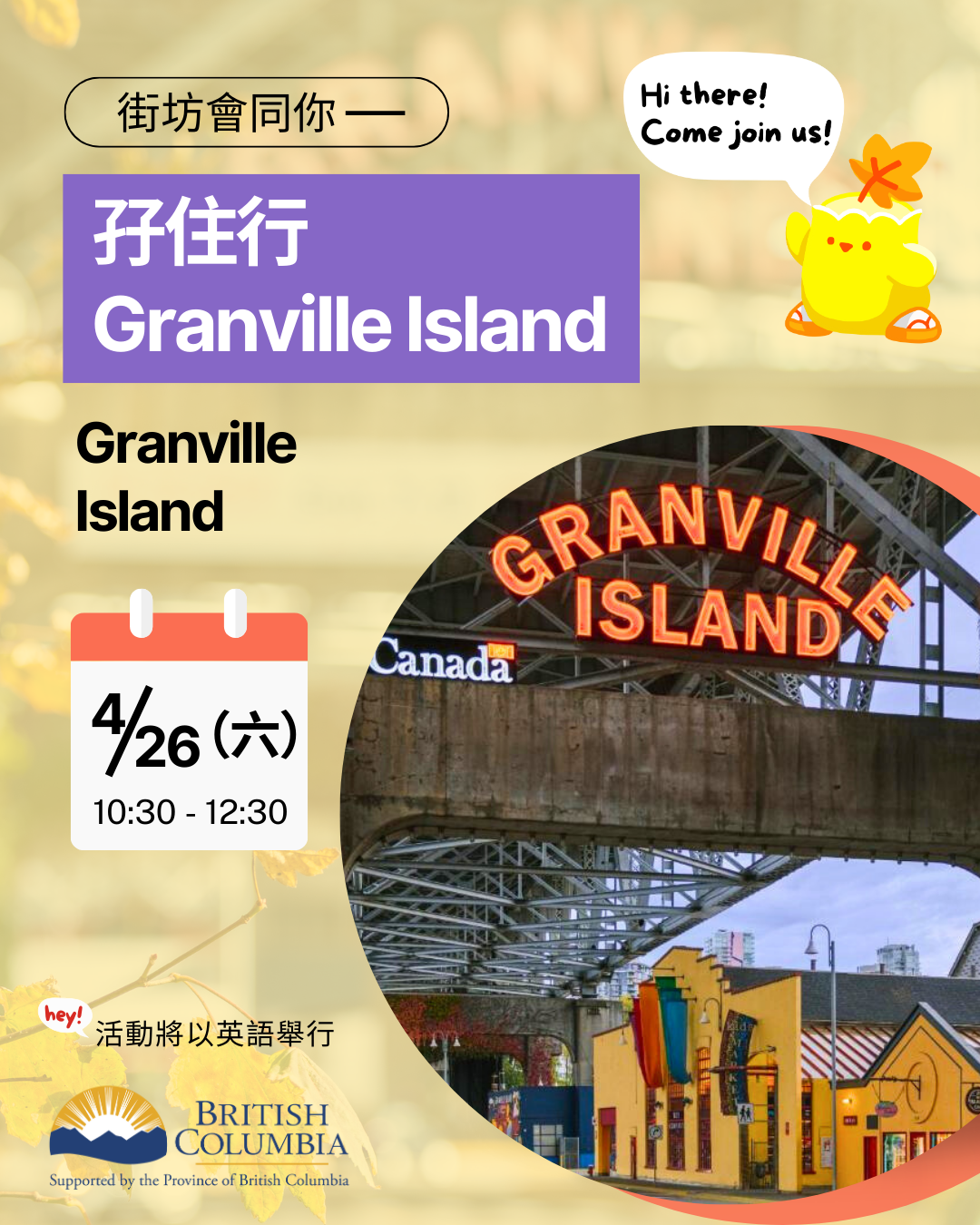街坊會同你 - 孖住行 Granville Island
👇👇👇👇👇
按此購票
活動將以英語舉行
👣 Granville Island Started with a Mud Flat:
The industrial boom of the 20th century required Vancouver to make room for the forest, mining, construction and shipping industries. Once the second Granville Street Bridge was complete, the Vancouver Harbour Commission approved a 35-acre reclamation project, which would ultimately result in the creation of Granville Island.
Granville Island was completed in 1916 using material dredged from False Creek. Once a mud flat, the man-made island became home to the warehouses, mills, factories and shops that serviced local industries.
Granville Island was initially named Industrial Island, but “Granville”, named after the bridge that runs directly overhead, was the name that stuck.
🏝️ Island No More:
Granville Island ceased being an island in the 1950s. The city intended to make room for more industrial space by filling in False Creek. They started by filling in the Granville Island back-channel and created the area that Sutcliffe Park and the Waterpark now occupy.
🥳 Other Facts about Granville Island:
▶️ Granville Island wasn't pretty until 1970's. There were no trees, grass or landscaping.
▶️ The buildings where the Public Market are now located were previously used by companies that manufactured and sold equipment for mining, logging and shipping industries.
▶️ Ocean Concrete is the longest-established tenant on the island, having set up shop there in 1917.
📅日期:4月26日 (星期六) (April 26, 2025 Saturday)
⏰時間 : 10:30am - 12:30pm
🚩集合地點: Outside of Pacific Institution of Culinary Arts - 1505 W. 2nd Ave. (Vancouver) (https://maps.app.goo.gl/6D9dEL6n8nnkGi9U9)
💰費用:Free
(Supported by the Province of British Columbia)
